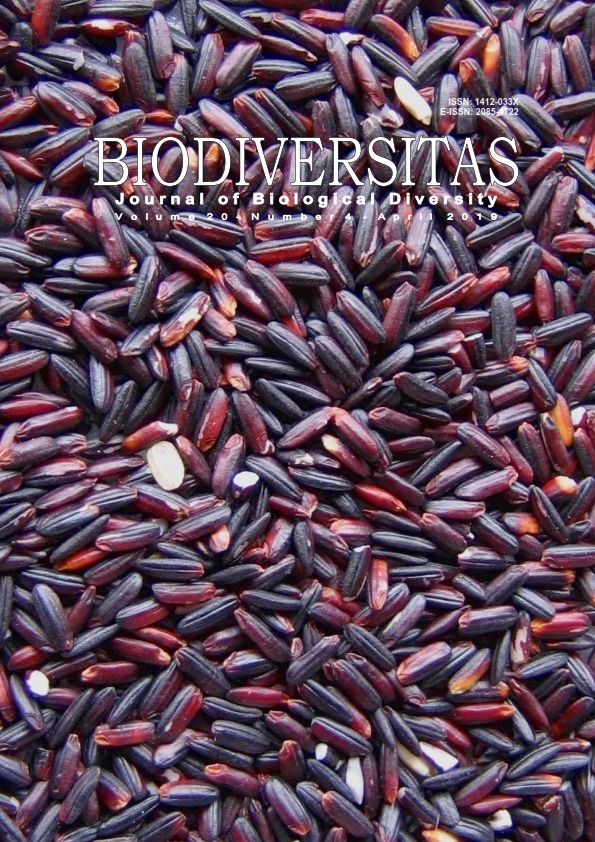Short Communication: Pollen diversity in the Bogor Botanic Gardens, Indonesia
##plugins.themes.bootstrap3.article.main##
Abstract
Abstract. Sudarmono. 2018. Short Communication: Pollen diversity in the Bogor Botanic Gardens, Indonesia. Biodiversitas 20: 931-936. Pollen morphology influenced the process of plants evolution. Bogor Botanic Gardens has many living collections in terms of pollen diversity. The purpose of this study was observed at the diversity of pollen morphology at the Bogor Botanic Gardens and its implications for the pollen conservation of plants in the collection. The method used is cleaning the pollen using Glacial Acetic Acid (AAG), then examined using a light microscope in the tissue culture laboratory of Bogor Botanic Gardens. There were 35 specimens that were analyzed and the results were randomly shaped pollen from radial symmetry or bilateral symmetry to its combination with monocolpate, tricolpate, pericolpate and stephanocolpate. While aperture types were the monoporate type with 5 specimens, monocolpate 10 specimens, tricolpate 11 specimens, stephanocolpate 4 specimens, periporate 4 specimens, and syncolpate 1 specimen. Three specimens families Caesalpiniaceae (order Fabales) has the shape of pollen vary, i.e radial symmetry monocolpate and radial symmetry tricolpate. Similarly, two specimens of the family Araliaceae (Apiales) different shapes, namely radial symmetry and bilateral symmetry tricolpate. In Asteraceae and Asclepiadaceae has the same shape, the radial symmetry tricolpate. Overall of 35 specimens then there are 22 specimens of radial symmetry and 13 specimens of bilateral symmetry. For the same family have the same ornamentation, for example in the Lamiaceae, Malvaceae, and Rutaceae. But the uniqueness occurs in the family of Arecaceae or palm family that show the diversity in the shape and size of pollen in each genus. Pollen morphology analysis through a combination of morphological data, palynology, and molecular samples more would be better. Pollen bank as pollen in the living collections of Bogor Botanic Gardens is needed to germplasm conservation of endangered plants in Indonesia.
